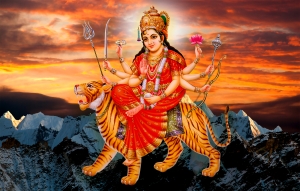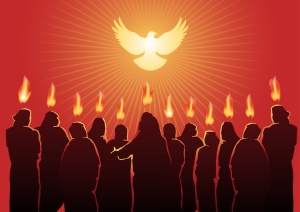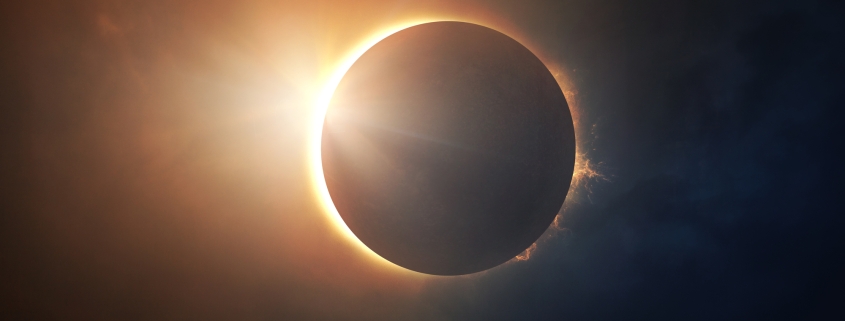Total Solar Eclipse April 8
Oh! Oh! The Vedic New Year Starts with a Total Solar Eclipse
By Astro-Palmist Guylaine Vallée
Eclipses are very potent symbols of world events and astrologers have always placed great meaning upon them. A solar eclipse occurs when the Moon passes between the Sun and Earth, causing the Moon to cast a shadow on Earth. A lunar eclipse occurs when Earth is between the Sun and the Moon, causing Earth to cast a shadow on the Moon. Lunar eclipses occur when a Full Moon happens near a lunar node. Solar eclipses occur when a New Moon happens near a node. In Vedic astrology, the nodes of the Moon are referred to as the shadow planets, Rahu and Ketu.
On April 8th, a total solar eclipse will be visible along a narrow path stretching 10,000 miles across North America, from Mexico’s Pacific coast to Newfoundland, including parts of Ontario and Quebec. It just so happens that the eclipse coincides with the Vedic New Year, which occurs every year in March or April when the Sun and Moon are in Pisces. The New Year’s chart shows the trend for the whole year. What makes this year’s chart especially potent is that Rahu is joining the Moon and Sun in the sign of Pisces. This signals we are in for a year of intensity that will have a dramatic impact on all of us. Why? Because according to Hindu legend, it is during an eclipse that the shadowy demon Rahu-Ketu takes revenge on the luminaries of Sun and Moon by consuming their light. When this happens, the pure and creative energy of the luminaries becomes dark.
In Vedic philosophy, all auspicious events begin and end by being blessed with light—either the light of a full Moon or the daytime Sun. Consequently, the darkness of eclipses are considered inauspicious times to start or end anything important in our life. So, while millions are flocking to witness this year’s eclipse, according to Eastern philosophy, eclipses should be avoided altogether, making them a great time to stay inside, meditate and be reflective. It is especially effective for introspection and connecting with the Spirit within you.

Goddess Durga
Fortunately, the day after the eclipse (April 9th) marks the beginning of Navaratri, the nine-day festival celebrating the victory of good over evil. Hindu devotees across the world believe that it is during these nine days that Goddess Durga materialized on Earth from her heavenly abode to fight the demon King, Mahishasur. These nine days are considered to be particularly auspicious for meditation to fortify ourselves against any negativity.
In Christian tradition, we are currently in the season of Eastertide, the 50 days after Christ’s resurrection during which Jesus appeared for 40 days throughout the Holy Land, teaching his followers and instructing his disciples to take his teachings of love and forgiveness to the four corners of the Earth.

Pentecost
On the 40th day, Jesus ascended to Heaven telling his disciples He was not abandoning them and that He would send the Holy Spirit to comfort and empower them ten days later, a day now recognized as Pentecost. This year, Ascension day is celebrated on May 9th and Pentacost on May 19th. Like Navaratri, Eastertide is a very good time to meditate. In other words, this is a great time to take advantage of the positive Cosmic energy surrounding us.
If you decide to watch the eclipse, make sure you do so safely as it can cause serious eye damage. Find out how to protect yourself by visiting American Astronomical Society’s resource page.
Want to find out what the Vedic New Year’s chart holds in store for you? Book a consultation with one of our astro-palmists.
To book a consultation, call us toll-free at 1-866-428-3799 from Canada or the U.S.
You can reach us from anywhere in the world by calling: 1-819-428-4298, or click here.


Leave a Reply
Want to join the discussion?Feel free to contribute!